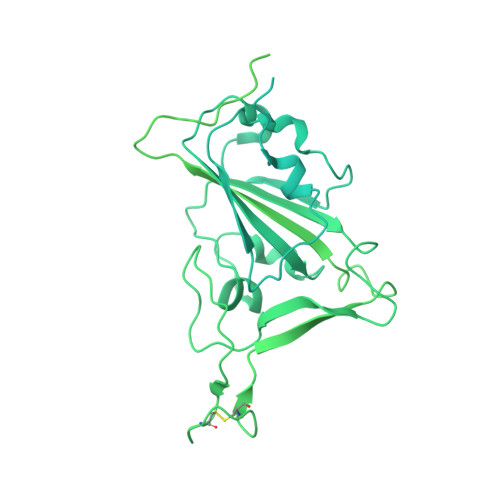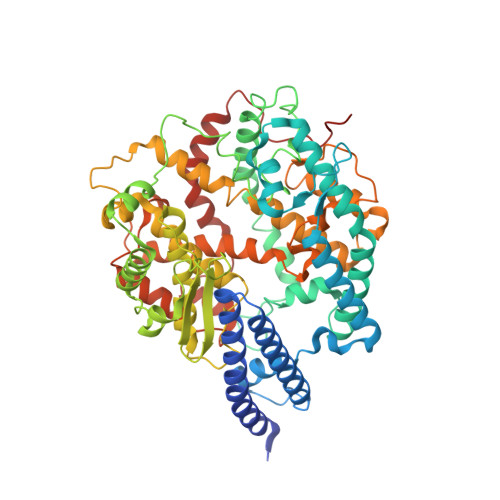The receptor binding domain of SARS-CoV-2 Omicron subvariants targets Siglec-9 to decrease its immunogenicity by preventing macrophage phagocytosis.
He, X., Zhang, X., Wu, B., Deng, J., Zhang, Y., Zhu, A., Yuan, Y., Lin, Y., Chen, A., Feng, J., Wang, X., Wu, S., Liu, Y., Liu, J., Wang, Y., Li, R., Liang, C., Yuan, Q., Liang, Y., Fang, Q., Xi, Z., Li, W., Liang, L., Zhang, Z., Tang, H., Peng, Y., Ke, C., Ma, X., Cai, W., Pan, T., Liu, B., Deng, K., Chen, J., Zhao, J., Wei, X., Chen, R., Zhang, Y., Zhang, H.(2024) Nat Immunol 25: 622-632
- PubMed: 38454157
- DOI: https://doi.org/10.1038/s41590-024-01776-2
- Primary Citation of Related Structures:
8WGV, 8WGW - PubMed Abstract:
The development of a vaccine specific to severe acute respiratory syndrome coronavirus 2 Omicron has been hampered due to its low immunogenicity. Here, using reverse mutagenesis, we found that a phenylalanine-to-serine mutation at position 375 (F375S) in the spike protein of Omicron to revert it to the sequence found in Delta and other ancestral strains significantly enhanced the immunogenicity of Omicron vaccines. Sequence FAPFFAF at position 371-377 in Omicron spike had a potent inhibitory effect on macrophage uptake of receptor-binding domain (RBD) nanoparticles or spike-pseudovirus particles containing this sequence. Omicron RBD enhanced binding to Siglec-9 on macrophages to impair phagocytosis and antigen presentation and promote immune evasion, which could be abrogated by the F375S mutation. A bivalent F375S Omicron RBD and Delta-RBD nanoparticle vaccine elicited potent and broad nAbs in mice, rabbits and rhesus macaques. Our research suggested that manipulation of the Siglec-9 pathway could be a promising approach to enhance vaccine response.
Organizational Affiliation:
Institute of Human Virology, Department of Pathogen Biology and Biosecurity, and Key Laboratory of Tropical Disease Control of Ministry of Education, Zhongshan School of Medicine, Sun Yat-sen University, Guangzhou, China.


















